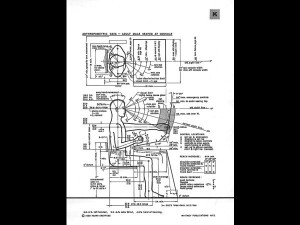The ergonomics of seating

IN ANTHROPOMETRICS, the smallest dimensions of the human body are taken into consideration in the hope that these measurable average dimensions will help determine the physical context in which body movements (or states of rest) are best accommodated.
A chair is a very difficult object to design. A skyscraper is almost easier.— Ludwig Mies van der Rohe
Anyone who’s ever had the experience in dealing the polarities in scale of designing a chair versus designing a building can attest to that. Smaller doesn’t necessarily mean easier. While a chair may have such a seemingly mundane, everyday existence, it is responsible for the state of our physical wellness as we spend most of the hours in a day engaged in tasks that require us to be settled down. Thus, the small nuances of crafting a chair to fit every nook and cranny of the body leaves us having to resolve many design and functional issues.
Work chairs developed in America during the mid-1800s when desk workers flourished due to the expanding railway systems in that industrial age. It was thought that more comfortable chairs would keep the staff in their workplace longer. The design of a work chair took off from that of the wooden rocking chair so popular then. It eventually advanced into accommodating other functions such as the swiveling and rolling movements.
Ergonomics
Later in the 1970s, just as the computer age was dawning, the study of ergonomics—the science of designing with anthropometrics (the comparative study of human body measurements) in relation to the use and safety of equipment—revolutionized the design not only of the work chair, but the entire science of seating as well.
Article continues after this advertisementIn anthropometrics, the smallest dimensions of the human body are taken into consideration in the hope that these measurable average dimensions will help determine the physical context in which body movements (or states of rest) are best accommodated. Ultimately, the task of a chair is to properly support a human being’s torso and extend this support to all the body’s other parts.
Article continues after this advertisementThe spine’s lumbar area—that little inward curved portion at the lower part of the back that keeps the upper body in its upright position—is crucial in holding the body in its equilibrium. The awkward positioning of the lumbar area can cause the back to prop forward or backward, putting undue stress on the neck and shoulder areas, and to the lumbar muscles themselves, leading to back pain, muscle stress, stiffness and eventually, inflammation.
Proper seating
While a high rise sits on a one dimensional surface, a chair has to consider the many surfaces that lean, rest, recline and set themselves upon it, requiring support for the body’s workings given a particular task. Remember, proper seating is not limited to the workplace: dining chairs, task chairs like a salon chair or pilot’s seat, need to provide the adequate support to the specific task at hand as well. Any seat for prolonged use must be ergonomically designed.
Measurements are dimensions critical to the design of a proper chair but the variable features like cushioning, upholstery, spring supports, footrests, and other materials and accessories, fine tune the science comfort. Foam, for example, has various levels of hardness or softness, depending on the function. Their various grades may even be bonded together to address small nuances in degrees of support required within the same area.
Very little room for error
Backrests now utilize an open mesh material that not only keeps the surface tactile, but provides for movement and ventilation as well. Gadgetry for manipulating the level of lumbar support, the angles of forward and backward tilting and the adjustments for heights, have made breakthroughs the rail deskmen of the 1800s could never have imagined.
So while a skyscraper provides spaces for its users, a chair provides forms. The skyscraper may be a complicated structure to design, but ergonomically speaking, it’s the chair—up close and personal—that leaves very little room for error.
Contact the author through [email protected] or through our Asuncion Berenguer Facebook account.